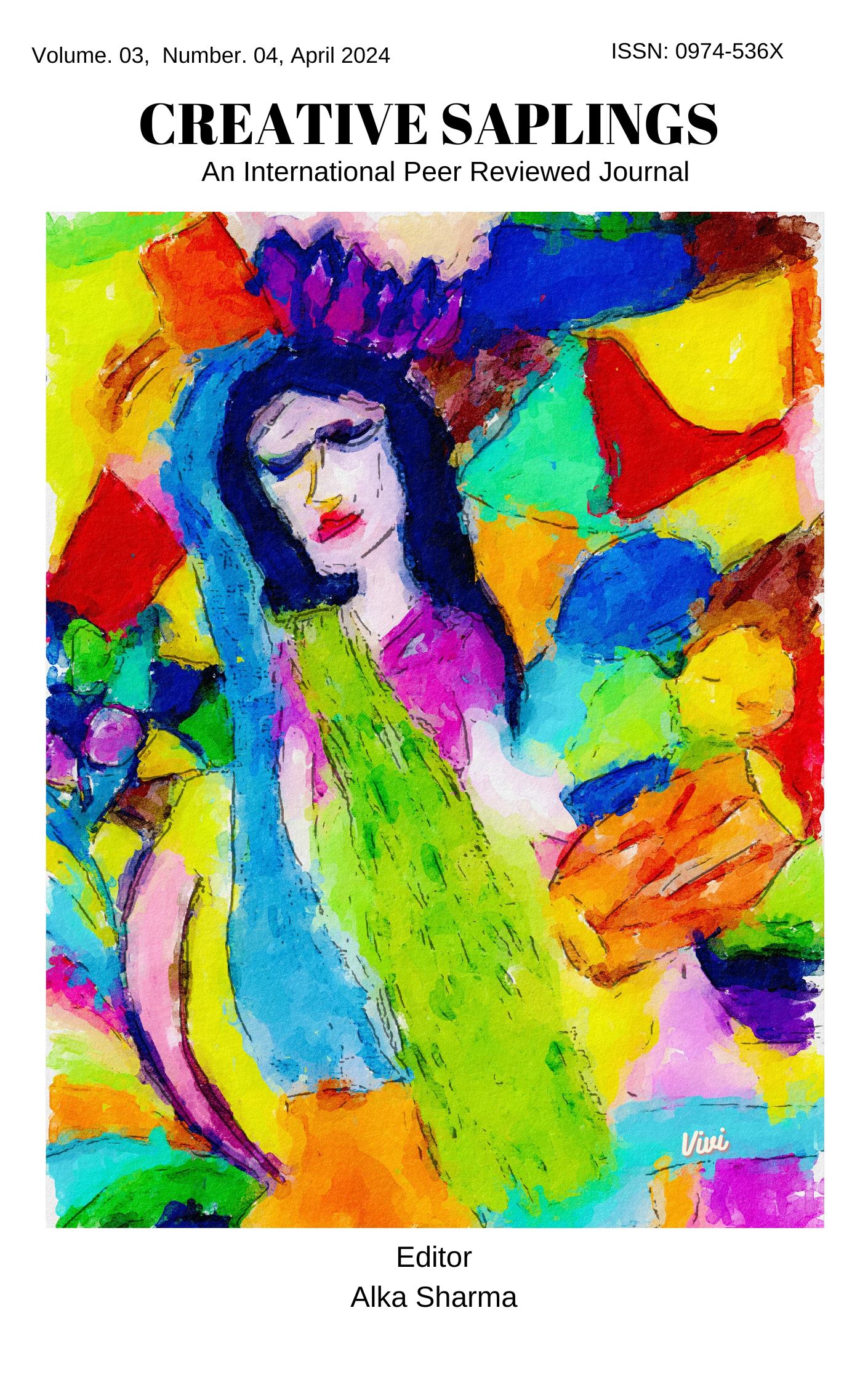Authentic Materials for Intercultural Communication: Develop Speaking Materials That Encourage Learners to Engage in Authentic Cross-Cultural Communication Effectively in Diverse Global Contexts
DOI:
https://doi.org/10.56062/gtrs.2024.3.4.563Keywords:
Authentic materials, value of appropriate materials, speaking skills, effectiveness of language.Abstract
This study examines the role that genuine materials have in supporting language learners' successful cross-cultural communication in a variety of international circumstances. Speaking materials that accurately capture the complexity of cross-cultural communication are desperately needed, as the importance of intercultural competency and the interconnection of cultures rise. Utilising theoretical frameworks from language education and intercultural communication, this study suggests a genuine materials-based instructional method to support students' meaningful cross-cultural encounters. The first part of the study looks at the theoretical foundations of authenticity in language learning materials, emphasising the role that cultural authenticity plays in encouraging sincere comprehension and enjoyment of various linguistic and cultural activities. The possibilities and difficulties of creating real speaking materials for cross-cultural communication are then covered, along with concerns about task design, language competence levels, and cultural representation. The article also offers a range of methods and approaches for producing and applying real resources in language learning environments to improve students' international communicative proficiency. Real-world communication activities, the incorporation of multimedia resources, collaborative learning opportunities, and the promotion of critical reflection on cultural views are some of these tactics. This study shows how genuine resources help learners develop their empathy, communication skills, and cross-cultural awareness through a review of empirical studies and pedagogical examples. It emphasises the part language instructors play in facilitating cross-cultural learning opportunities and promotes a learner-cantered methodology that gives students the tools they need to actively interact with various cultural viewpoints.
This research adds to the current conversation on language pedagogy by supporting the use of real materials in intercultural communication instruction. It attempts to motivate language teachers to embrace authenticity as a fundamental idea in fostering significant cross-cultural interactions in language classrooms by offering useful insights and pedagogical suggestions. The purpose of this research is to examine how real resources for cross-cultural communication are created and used in language learning environments. It will include a summary of theoretical frameworks, instructional strategies, and real-world examples to help language teachers design speaking resources that inspire students to interact with cultural diversity in a genuine way.
Downloads
References
Bibliography:
Abda, K. (2017). Assessing the factors that affect teaching speaking skills: the case of robe teachers’ college, english department second year students. International Journal of Humanities & Social Science Studies, 3(5), 285–299.
Ahmed, S. (2017). Authentic ELT materials in the language classroom: An overview. Journal of Applied Linguistics and Language Research, 4(2), 181–202.
Alharbi, H. A. (2015). Improving Students’ English Speaking Proficiency in Saudi Public Schools. International Journal of Instruction, 8(1), 105–116.
Arifin, M. N. (2018). Teaching speaking skills in the young learners’ classroom. Retrieved Form Https://Www.Researchgate.Net/Publication/327529276_Teaching_Speaking_Skills_in_the_Young_Learners’ _Classroom/Link/5b936f0f299bf1473925d76e/Download.
Bahadorfar, M., & Omidvar, R. (2014). Technology in teaching speaking skill. Acme International Journal of Multidisciplinary Research, 2(4), 9–13.
Ciornei, S. I., & Dina, T. A. (2015). Authentic texts in teaching English. Procedia-Social and Behavioral Sciences, 180, 274-279.
Burns, A. (1998). Teaching speaking. Annual Review of Applied Linguistics, 18, 102–123.
Oura, G. K. (2001). Authentic task-based materials: Bringing the real world into the classroom. Sophia Junior College Faculty Bulletin, 21, 65-84.
Churchill, D. (2017). Digital resources for learning. Singapore: Springer.
Gani, S. A., & Marhaban, S. (2021). The Strategies Applied by Teachers in Teaching Speaking. English Education Journal, 12(3), 381–398.
Villarroel, V., Bloxham, S., Bruna, D., Bruna, C., & Herrera-Seda, C. (2018). Authentic assessment: Creating a blueprint for course design. Assessment & Evaluation in Higher Education, 43(5), 840-854.
Hou, A. Y. C., Morse, R., Chiang, C.-L., & Chen, H.-J. (2013). Challenges to quality of English medium instruction degree programs in Taiwanese universities and the role of local accreditors: A perspective of non-English-speaking Asian country. Asia Pacific Education Review, 14(3), 359–370.
Villarroel, V., Bloxham, S., Bruna, D., Bruna, C., & Herrera-Seda, C. (2018). Authentic assessment: Creating a blueprint for course design. Assessment & Evaluation in Higher Education, 43(5), 840-854. Villarroel, V., Bloxham, S., Bruna, D., Bruna, C., & Herrera-Seda, C. (2018). Authentic assessment: Creating a blueprint for course design. Assessment & Evaluation in Higher Education, 43(5), 840-854.
Hughes, R., & Reed, B. S. (2016). Teaching and researching speaking. Routledge.
Liu, J., Hu, S., & Pascarella, E. T. (2021). Are non-native English speaking students disadvantaged in college experiences and cognitive outcomes? Journal of Diversity in Higher Education, 14(3), 398.
Oura, G. K. (2001). Authentic task-based materials: Bringing the real world into the classroom. Sophia Junior College Faculty Bulletin, 21, 65–84.
Pattanpichet, F. (2011). The effects of using collaborative learning to enhance students English speaking achievement. Journal of College Teaching & Learning (TLC), 8(11), 1–10.
Qamar, M. B. (2016). The impact of learner’s autonomy on teaching oral skills (speaking skills) in an EFL classroom. Journal of Language Teaching and Research, 7(2), 293.
Marsevani, M., & Habeebanisya, H. (2022). A Classroom Action Research: Improving Speaking Skills through Work in Pair Technique. TLEMC (Teaching and Learning English in Multicultural Contexts), 6(1), 16-22.
Rao, P. S. (2019). The importance of speaking skills in English classrooms. Alford Council of International English & Literature Journal (ACIELJ), 2(2), 6–18.
Razi, F., Muslem, A., & Fitrisia, D. (2021). Teachers’ strategies in teaching speaking skill to junior high school students. English Education Journal, 12(3), 399–415.
Susanty, H., Ritonga, D., & Tursina, P. (2017). Teaching and Learning Process of Speaking. Getsempena English Education Journal, 4(2), 179–184.
Downloads
Published
Issue
Section
License
Copyright (c) 2024 Pritee Jain

This work is licensed under a Creative Commons Attribution-NonCommercial 4.0 International License.





